There are many types of connectors, and when developing new equipment, it is necessary to find and select the most suitable connector. The following introduces the characteristics of the differences in the mating direction of small connectors used for internal connections in electronic equipment.
When using a cable, FFC or FPC to connect the signal of one PCB board to another circuit board, the connector that is mated in a vertical direction close to the surface of the circuit board where the connector is installed is called a vertical mating connector; the connector that is approached in a horizontal direction is called a horizontal mating connector.

Figure 1 Vertically mating connector (left) and horizontally mating connector (right)
Connector insertion position
In the case of a connector that uses a plug to engage with a socket mounted on a substrate, the opening of the vertical connector socket faces upward. In this way, during the substrate assembly process, the substrate can be easily visually confirmed and determined by looking down at the substrate from above.

Figure 2 Vertical mating wire-to-board connector
However, with board-to-board FPC connectors, it can be difficult to visually align the plug in the correct insertion position for assembly because the FPC covers the entire plug and blocks the view of the receptacle on the board.
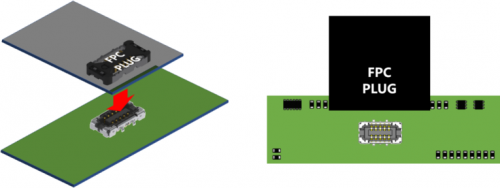
Figure 3 Vertically mating board-to-board FPC connector
In this case, the connector’s guiding (alignment) feature is very important, allowing the user to use the feel of his fingertips to find the correct insertion position while gently sliding the FPC plug into the socket.

Figure 4 Board-to-board FPC connector guide function
Placement on the board and clearance from other components
With vertical mating connectors, the plug approaches the socket on the board from above and mates, so mating the connector is not difficult even if the connector is in the middle of the board. In addition, the clearance area around the connector is relatively narrow, so other components can be installed around the connector. This provides greater flexibility in board design compared to horizontal mating connectors.

Figure 5 Vertical docking of connectors and other components on the circuit board
On the other hand, for horizontal mating connectors, the opening of the receptacle faces the side, so the plug moves parallel to the board surface to mate to the receptacle. Therefore, a larger clearance area is required around the opening of the receptacle mounted on the board to ensure that it does not cause obstruction during the plug mating process.

Figure 6 Horizontal mating wire-to-board connector
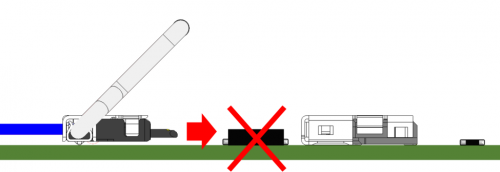
Figure 7 Horizontal butt connector and clearance area
In addition, if a low-profile horizontal mating connector is mounted in the middle of a circuit board, the assembly process may become difficult because the fingers holding the FPC/FFC or plug will touch the circuit board during the mating process. When designing the circuit board, it may be necessary to consider the assembly process, such as placing a low-profile horizontal mating connector at the edge of the circuit board. (For the correct operation of the connector, refer to the instruction manual of each product.)
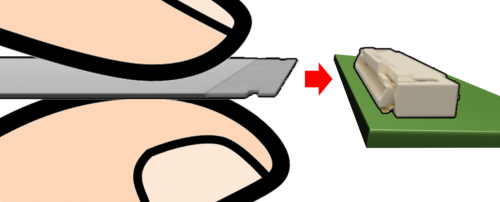
Figure 8 Inserting the FPC into a horizontal mating FPC/FFC connector
Connector height dimensions and contact wipe length
Since the contact wipe length is affected by the dimensions in the mating direction, for vertical mating connectors, the contact wipe length is affected by the length in the vertical direction perpendicular to the board surface, that is, the connector height dimension. In portable high-performance devices such as smartphones and tablets, components are mounted at high density in a narrow and limited space. In such devices, the components are required to be small and thin, but when the height of the vertical mating connector is reduced, it may be difficult to maintain the contact wipe length.

Figure 9 Vertical mating connectors and contact wipe length
For horizontally mating connectors, the contact wipe length is affected by the length in the horizontal direction parallel to the board surface (i.e., the depth dimension of the connector). Therefore, it is easier to consider reducing the height of horizontally mating connectors while maintaining the contact wipe length than vertically mating connectors.

Figure 10 Horizontal mating connector and contact wipe length
Mating retention force for low profile connectors
A shorter contact friction length means a narrower tolerance range for the mating position required to ensure contact. Therefore, if the device is dropped and the mating position moves, the chances of the contacts losing contact may be higher. One way to improve contact reliability is to use a locking mechanism such as friction or a mechanical lock to enhance the mating retention between the plug and receptacle.

Figure 11 Friction lock example of a vertical mating connector
In addition, one of the methods to supplement the docking retention force of the vertical docking connector is to attach appropriate cushioning material above the connector. In this way, when the product housing is installed, the cushioning material will appropriately squeeze the connector and maintain the docking position of the connector.
This approach can be considered when developing small portable devices, for example, that may be dropped while being carried. (*However, be careful not to apply excessive pressure to the connector, as this may cause damage.)
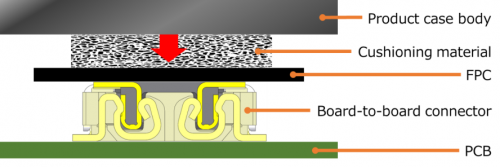
Figure 12 Cross-sectional view of the box and buffer material installed above the connector
Effect of insertion force
Since vertical docking connectors are docked by inserting a plug into a circuit board, vertical docking connectors with a large insertion force may apply excessive pressure to the circuit board during the docking process. Therefore, when assembling circuit boards that are not suitable for applying pressure (such as panel integrated module circuit boards), measures may need to be taken, such as selecting a vertical docking connector with a small insertion force, preparing an assembly environment that will not cause deformation of the circuit board during assembly, or selecting a horizontal docking connector.
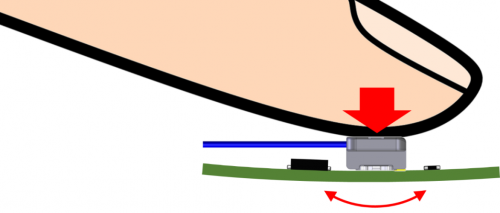
Figure 13 Mating with a high insertion force vertical mating connector
Summary of the characteristics of vertical mating/horizontal mating connectors
| Vertical docking connector | Horizontal docking connector |
| The clearance area around the connector is narrower than with horizontally mating connectors and provides greater flexibility in board design. | Since the clearance area near the opening is relatively wide, there is a high probability of dead space on the board. |
| Even if the connector is mounted in the middle of the board, it will not have a significant impact on the mating process. | The mating process of connectors mounted in the middle of a board can become difficult for thin, small connectors. |
| Reducing the height of the connector while maintaining the contact wipe length can be difficult. | Compared to vertically mating connectors, it is relatively easy to reduce the height of the connector while maintaining the contact wipe length. |
| When assembling high insertion force connectors, excessive stress may be placed on the circuit board. | The pressure applied to the board during assembly may be less than that of assembling vertically mating connectors. |










